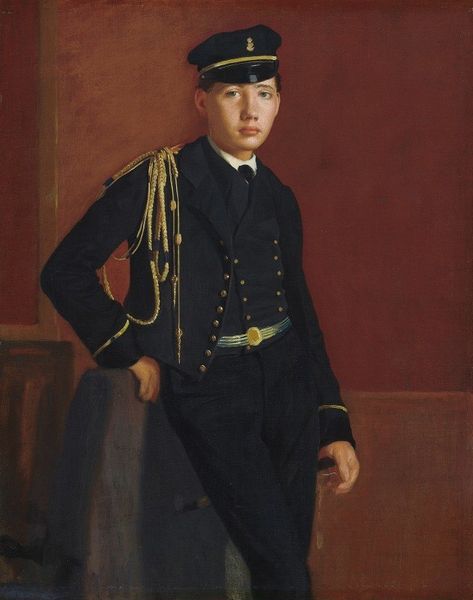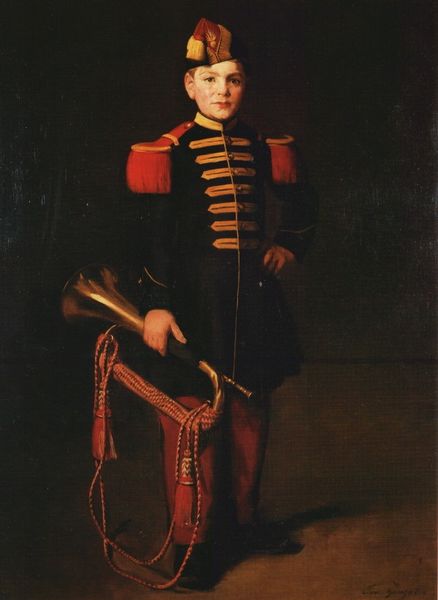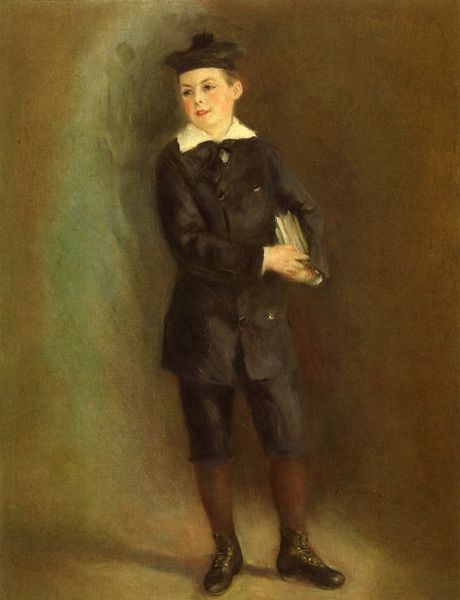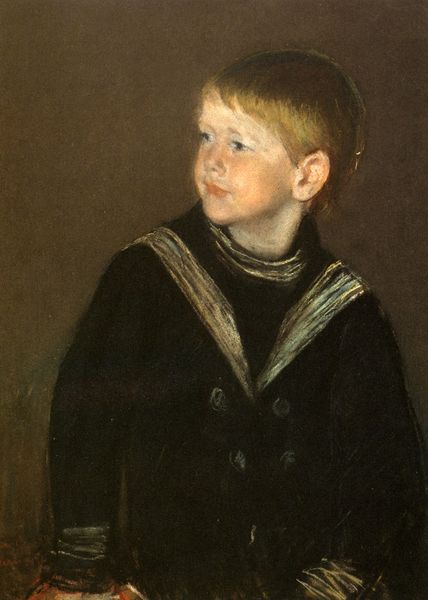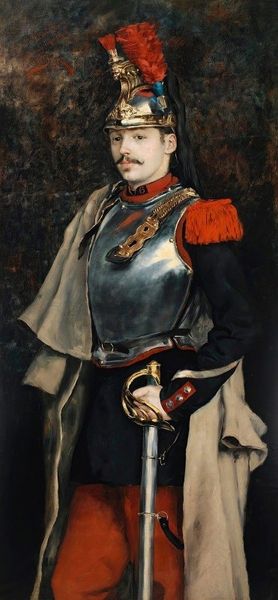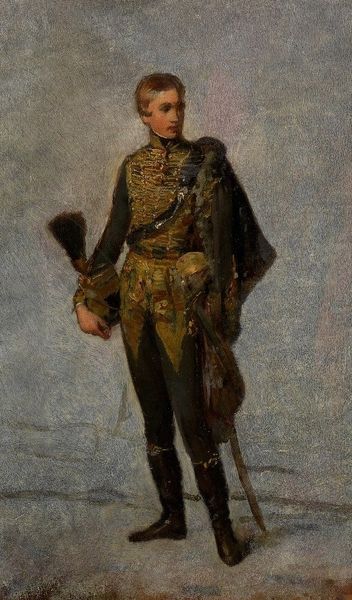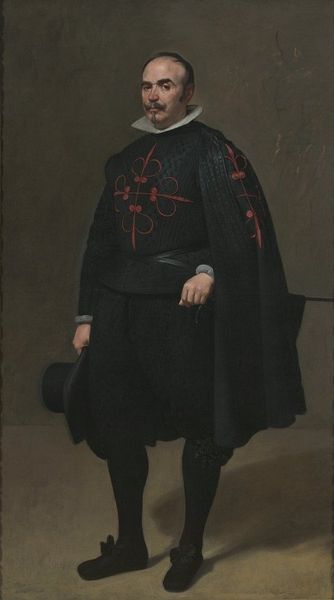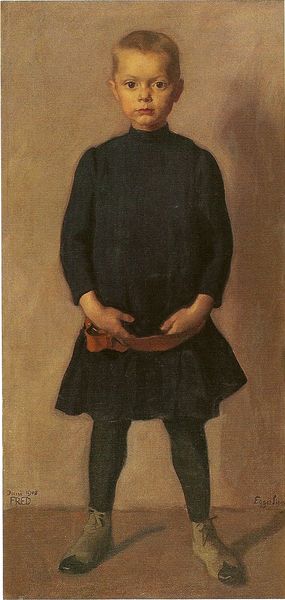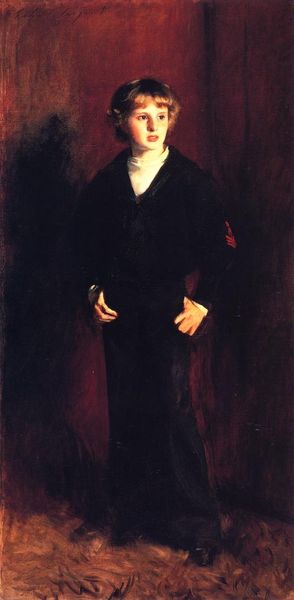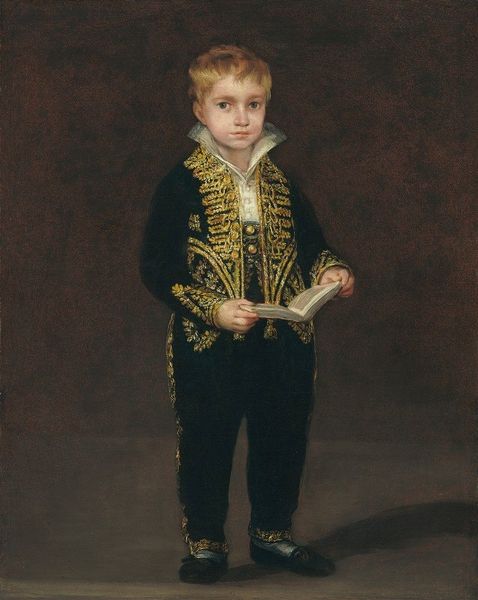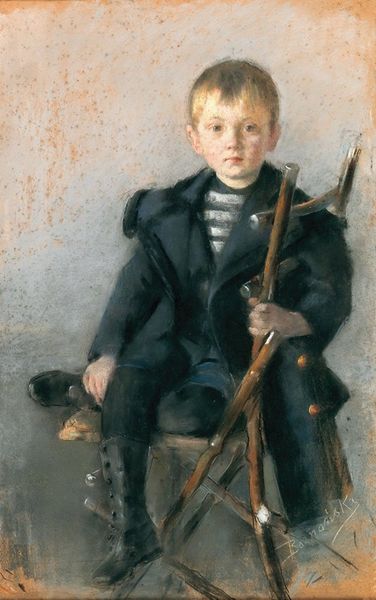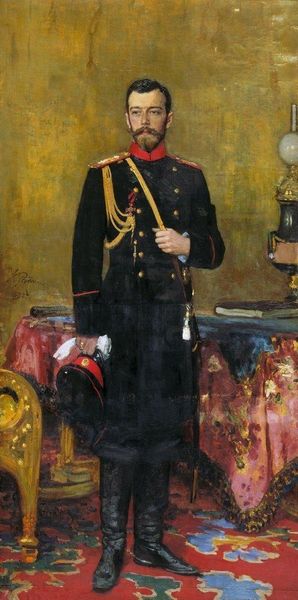
Copyright: Public domain
Editor: Here we have Ivan Kramskoy’s oil painting "Portrait of Sergei Kramskoy, son of the artist," created in 1883. There's something so captivating about the boy's gaze and military costume against a blurry green landscape. What do you make of it? Curator: I find this portrait compelling when considering the social context of 19th-century Russia. Kramskoy was a key figure in the Peredvizhniki movement, emphasizing realism and portraying ordinary people. Why, then, a portrait of his son in what appears to be military garb? Editor: It's interesting that you highlight that; I was too drawn to the aesthetics. So, is it possibly a statement about societal expectations or perhaps even a commentary on the role of children within that era? Curator: Precisely. The uniform is undoubtedly a symbolic representation. Do you see how it might allude to the societal pressures placed upon young boys, particularly within the upper classes? The portrait isn’t just a rendering of a child; it’s about his potential future and the expectations imposed on him by Russian society. Editor: That reframes my initial perception entirely. I hadn't considered the Peredvizhniki connection affecting his portraiture. Curator: Also, consider where this work would be displayed. Art in this period served a crucial public function. Kramskoy, through works like this, engaged with conversations about identity and national aspirations, even within the domestic sphere. Editor: So, the art isn’t just personal; it's actively participating in a broader socio-political dialogue of the time. This was more than just a father painting his son. That's such a helpful way of contextualizing art! Curator: Exactly! Reflecting on how societal forces intersect with art makes understanding visual language profoundly richer.
Comments
No comments
Be the first to comment and join the conversation on the ultimate creative platform.
